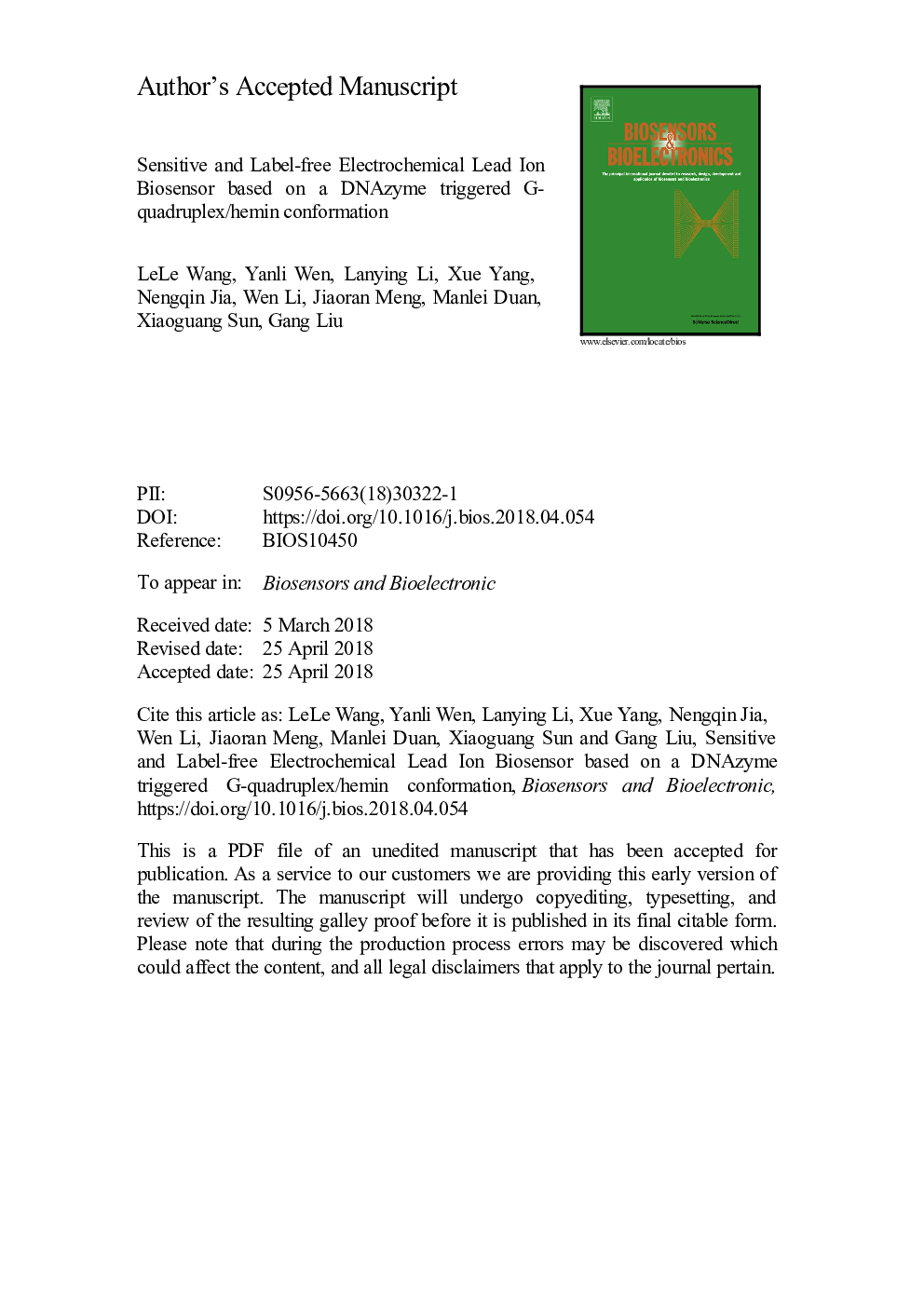| Article ID | Journal | Published Year | Pages | File Type |
|---|---|---|---|---|
| 7229163 | Biosensors and Bioelectronics | 2018 | 24 Pages |
Abstract
Lead ion (Pb2+) is a common environmental contaminant, which causes serious bioaccumulation and toxicity in human body. In this work, we developed a novel Pb2+ electrochemical biosensor using the specific DNAzyme on a DNA tetrahedron probe, in the presence of Pb2+, the substrate strand was cleaved into two parts and released a “G-rich” oligo which subsequently formed a G-quadruplex/hemin complex, generating a detectable catalysis current signal with the assistant of H2O2. The 3-D DNA tetrahedron regulated the density and orientation of the probe and thus improved the DNAzyme reaction, and facilitated the complex DNA conformational change in the confined space of the interface on the electrode surface, Finally, the LOD of our biosensor was proved to be 0.008â¯nM (3Ï), which is 9000 times lower than the safety limit of EPA (15â¯Î¼g/L or 72â¯nM), and 6000 times lower than IARC (10â¯Î¼g/L or 48.26â¯nM), and more importantly, the specificity and reproducibility of the proposed biosensor was well demonstrated.
Related Topics
Physical Sciences and Engineering
Chemistry
Analytical Chemistry
Authors
LeLe Wang, Yanli Wen, Lanying Li, Xue Yang, Nengqin Jia, Wen Li, Jiaoran Meng, Manlei Duan, Xiaoguang Sun, Gang Liu,
